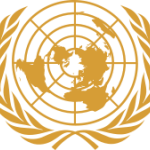- Sektör: NGO
- Number of terms: 31364
- Number of blossaries: 0
- Company Profile:
The United Nations Organization (UNO), or simply United Nations (UN), is an international organization whose stated aims are facilitating cooperation in international law, international security, economic development, social progress, human rights, and the achieving of world peace.
Waste produced as a result of various agricultural operations. It includes manure and other wastes from farms, poultry houses and slaughterhouses; harvest waste; fertilizer run-off from fields; pesticides that enter into water, air or soils; and salt and silt drained from fields. See also agricultural pollution.
Industry:Environment
Integrated process of information gathering, analysis, planning, decision-making, allocation of resources and formulation and enforcement of regulations by which the management authorities control the present and future behaviour of interested parties, in order to ensure the continued productivity of the resources.
Industry:Environment
System for the collection, transmission, treatment, storage and distribution of water from source to consumers, for example, homes, commercial establishments, industry, irrigation facilities and public agencies for water-related activities (fire-fighting, street flushing and so forth). See also dual supply system.
Industry:Environment
The surplus or deficit accruing from production before taking account of any interest, rent or similar charges payable on non-financial and tangible non-produced assets borrowed or rented by the enterprise, or any interest, rent or similar receipts receivable on financial non-produced assets owned by the enterprise.
Industry:Environment
Equation used as an erosion index in which soil loss (in short tons per acre) is defined as the mathematical product R K L S C P, where R is the rainfall erosivity index, K the soil erodibility factor, L the slope length factor, S the slope steepness factor, C the crop management factor and P the conservation factor.
Industry:Environment
Measure the material "throughput" through the economy by providing information on the material input from the environment into the economy, the transformation and use of that input in economic processes (extraction, conversion, manufacturing, consumption) and its return to the natural environment as residuals (wastes).
Industry:Environment
These include livestock for breeding, dairy, draught, etc., and vineyards, orchards and other plantation trees, yielding repeated products and whose growth is under the direct control, responsibility and management of institutional units (within the production boundary of the SNA). See also non-produced natural assets.
Industry:Environment
The difference between total revenue generated from the extraction of natural resources and all costs incurred during the extraction process including the cost of produced capital, but excluding taxes, royalties and other costs that are not directly due to the extraction process. See market valuation and Hotelling rent.
Industry:Environment
Classification providing information on land cover, and the types of human activity involved in land use. It may also facilitate the assessment of environmental impacts on, and potential or alternative uses of, land. The classification, developed by the Economic Commission for Europe, consists of seven main categories.
Industry:Environment
1. Natural circulation of carbon which is exchanged among large carbon reserves in the land, the ocean, the biosphere and the atmosphere; 2. Circulation of carbon through ecosystems in the course of which carbon atoms from carbon dioxide are incorporated into organic compounds formed by green plants during photosynthesis.
Industry:Environment
